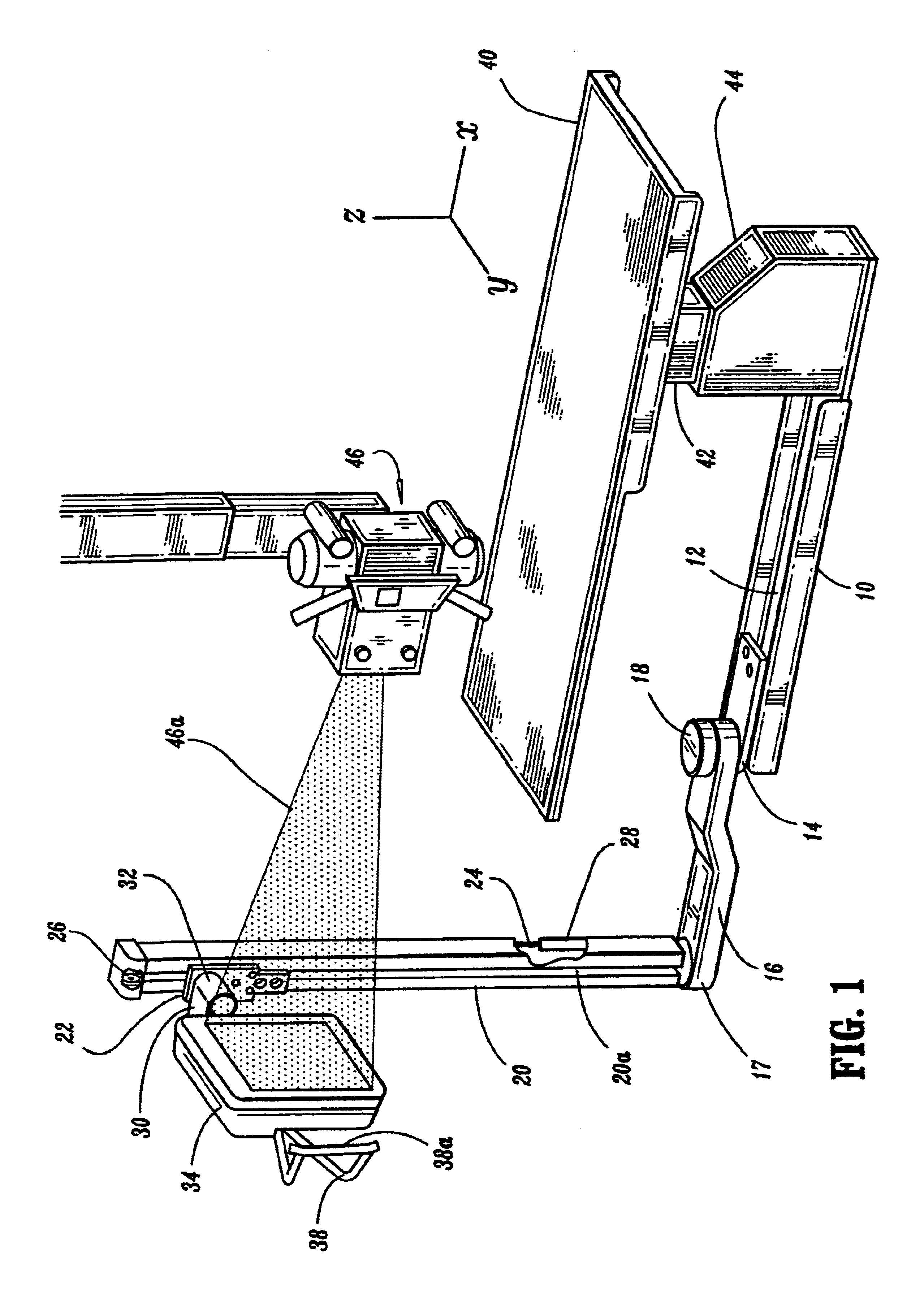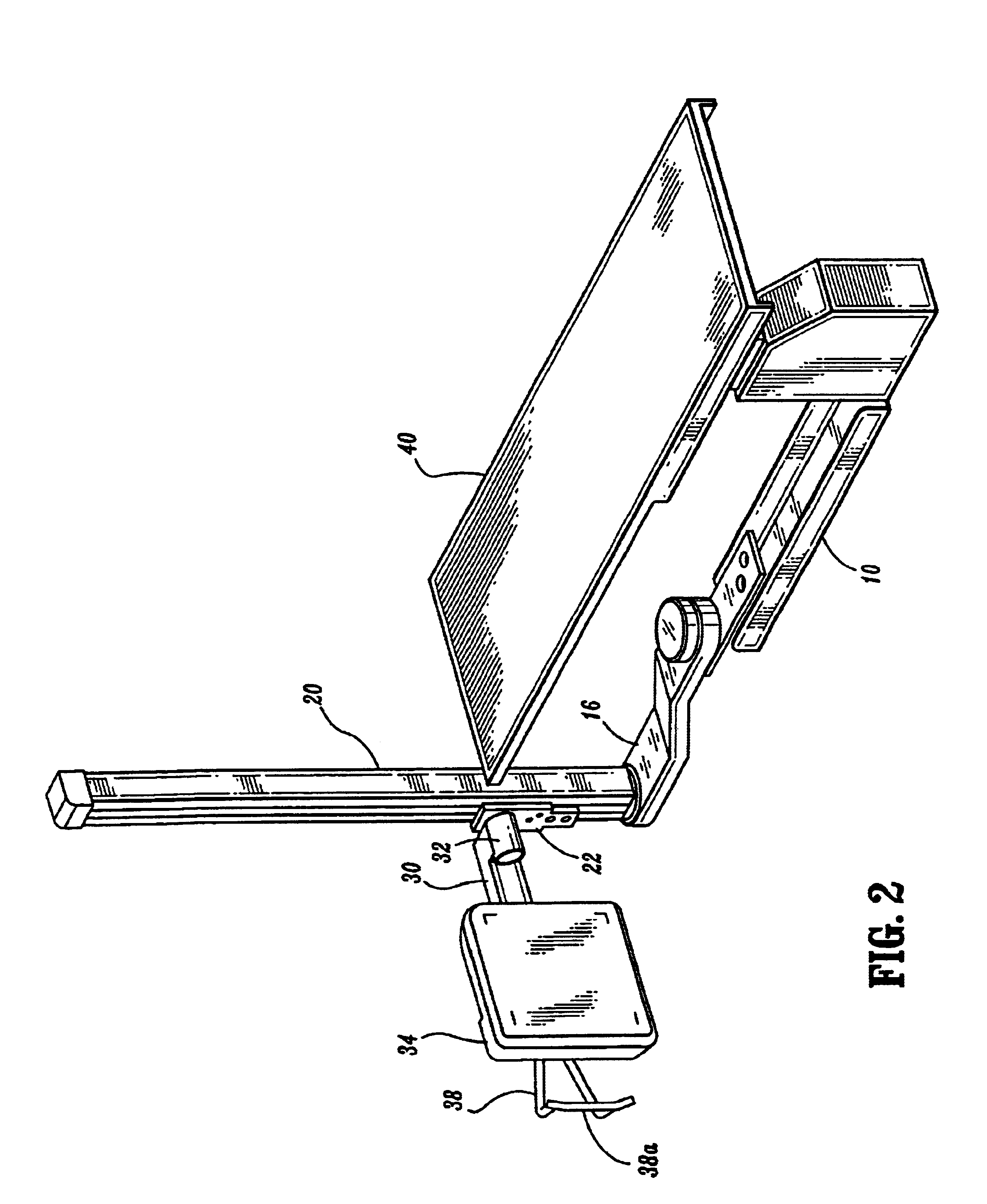Digital flat panel x-ray receptor positioning in diagnostic radiology
a digital flat panel and radiology technology, applied in the field of radiology, can solve the problems of high initial cost of digital detector, and difficulty in using in procedures where patients are involved, so as to achieve the effect of safe and convenient movemen
- Summary
- Abstract
- Description
- Claims
- Application Information
AI Technical Summary
Benefits of technology
Problems solved by technology
Method used
Image
Examples
Embodiment Construction
Referring to FIG. 1, a main support 10 can be secured to the floor of an x-ray room (or to a movable platform, not shown), and has a track 12 on which a lower slide 14 rides for movement along an x-axis. Slide 14 supports the proximal or near end of a generally horizontal lower arm 16 through a bearing at 18 allowing rotation of arm 16 about an upwardly extending axis, e.g., a z-axis. The distal or far end of lower arm 16 in turn supports an upwardly extending, e.g., vertical, column 20, mounted for rotation about an upwardly extending, e.g, vertical, axis though a bearing at 17. Column 20 has a slot 20a along its length. An upper slide 22 engages slot 20a to ride along the length of column 20 and is supported by a cable or chain system 24 that reverse direction over pulleys 26 at the top and bottom of column 20 (only the top pulley is illustrated) and connect to counterweights 28 riding inside column 20. Upper slide 22 in turn supports an upper arm 30 through a bearing arrangement ...
PUM
 Login to View More
Login to View More Abstract
Description
Claims
Application Information
 Login to View More
Login to View More - R&D
- Intellectual Property
- Life Sciences
- Materials
- Tech Scout
- Unparalleled Data Quality
- Higher Quality Content
- 60% Fewer Hallucinations
Browse by: Latest US Patents, China's latest patents, Technical Efficacy Thesaurus, Application Domain, Technology Topic, Popular Technical Reports.
© 2025 PatSnap. All rights reserved.Legal|Privacy policy|Modern Slavery Act Transparency Statement|Sitemap|About US| Contact US: help@patsnap.com



